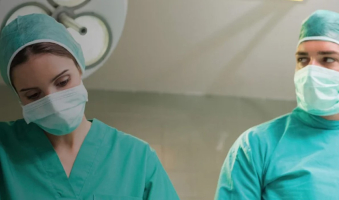Anaesthesia Fundamentals | Physiology | Capillary Dynamics and Interstitial Fluid



Capillary Dynamics and Interstitial Fluid
Session overview
Description
This session will explain and demonstrate how the structure of capillaries relates to function and how starling forces determine fluid homeostasis in different organ systems.
Learning objectives
By the end of this session you will be able to:
- Describe the anatomical features and distribution of continuous capillaries, fenestrated capillaries and discontinuous capillaries/sinusoids in the body and relate these differences to function
- Define the term vasomotion and discuss how the capillary beds alter their tone
- Calculate the Starling forces on a capillary in the systemic circulation, and describe the differences in the brain, kidney, liver and lung
- Explain the contribution of the capillary to the flow and volume characteristics of the systemic circulation as a whole
In this session you will learn about the structure and role of capillaries (Fig 1) in homeostasis of the body. The factors which affect blood flow in the capillary, and the role of different anatomical types of capillaries in the body, will be presented. This will enable the learner to describe the changes in interstitial fluid during health and in abnormal physiological states.
- Acute Medicine | Hoarseness and stridor 04 knowled...
- Posted By eIntegrity Healthcare e-Learning
- Posted Date: 2024-11-28
- Location:Online
- This session reviews the possible presentations of drug-induced cough and its causes.
- Acute Medicine | Haemoptysis 03 knowledge B
- Posted By eIntegrity Healthcare e-Learning
- Posted Date: 2024-11-28
- Location:Online
- This session explains the mechanisms associated with haemoptysis in bronchiectasis.
- Acute Medicine | Haemoptysis 03 knowledge A
- Posted By eIntegrity Healthcare e-Learning
- Posted Date: 2024-11-28
- Location:Online
- This session describes bronchiectasis and its causes.
- Acute Medicine | Haematemesis and melaena 01 knowl...
- Posted By eIntegrity Healthcare e-Learning
- Posted Date: 2024-11-28
- Location:Online
- This session reviews the causes of haematemesis and melaena. It covers the principles of resuscitation and risk stratification. It also discusses the management (both pharmacological and endoscopic) of patients who present with upper gastrointestinal blee
- Acute Medicine | Fever 01 knowledge A
- Posted By eIntegrity Healthcare e-Learning
- Posted Date: 2024-11-28
- Location:Online
- This session reviews Duke criteria and exceptions.
